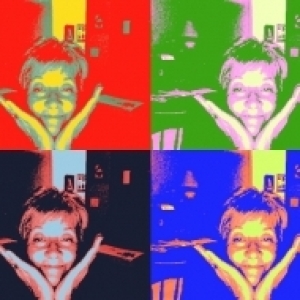Damselfly - Bluet
Earlier in the day I saw what I have now found out is the female of the species. I saw a very light colored damselfly and she was over in this same area, where the crocosmia is planted in our large container. Then later on, I spotted this blue one in the same spot. I got the 300 mm on my camera but didn't put it on the tripod because I was afraid this guy would disappear on me. He stayed quite a while and it was really interesting observing him. He would fly off and come back in a different spot on the metal trellis. Perhaps it was giving him a hot foot as we were in the direct sunlight. Then he did some push-ups, then he waved his long "tail" around which I suspect might be a mating call, or he was trying to intimidate me to shove off...or ?? I saw him clean his eyes. And in every picture I took it looks like he is looking right at me. Then he moved to this green leaf and I tried so hard to keep a steady hand to get the shot, and the leaf was moving in the wind, so that made it more tricky. I guess this is okay, considering the circumstances. I just love the color combination and all I did was sharpen it up a bit. Then I had to come inside and find out what I was taking a picture of.
This is a widely spread genus of small to medium size Pond Damsels with 35 species residing in North America, most showing similar characteristics within the genus. The males of most species are colored in various combinations of blue and black, but some are red, orange, yellow or lavender. The thorax is patterned with distinct stripes and the abdomen is variably patterned with black. Most bluets have postocular spots and/or an intra-occular line. Wings are generally clear with short thick stigmas. The shape and size of the postocular spots and intra-occular line can help in ID. Wings are generally hyaline with short stigmas.
Females are often tan, green or yellow. In some cases, the abdominal pattern of the female , especially S8-S10 is distinctive and the females may be easier to ID than the males. Females have a ventral spine located on segment eight, distinguishing them from other pond damsels.
Bluets are weak fliers and don't usually venture out too far from cover. When perched, they usually hold their wings alongside their abdomen.
There are 5 images of this guy on my Flickr page if you want to see all of him. Let me know if I picked the right image. :)
For those that are going to enjoy the 4th of July holiday, I hope you have a wonderful day. Catch ya later.
- 7
- 1
- Canon EOS REBEL T2i
- 1/100
- f/10.0
- 300mm
- 200

Comments
Sign in or get an account to comment.


